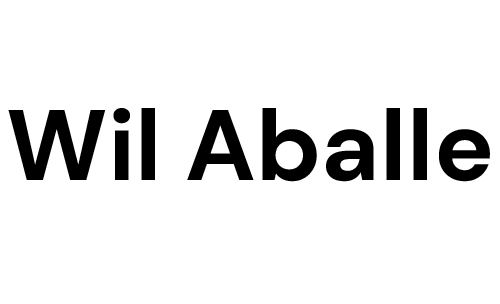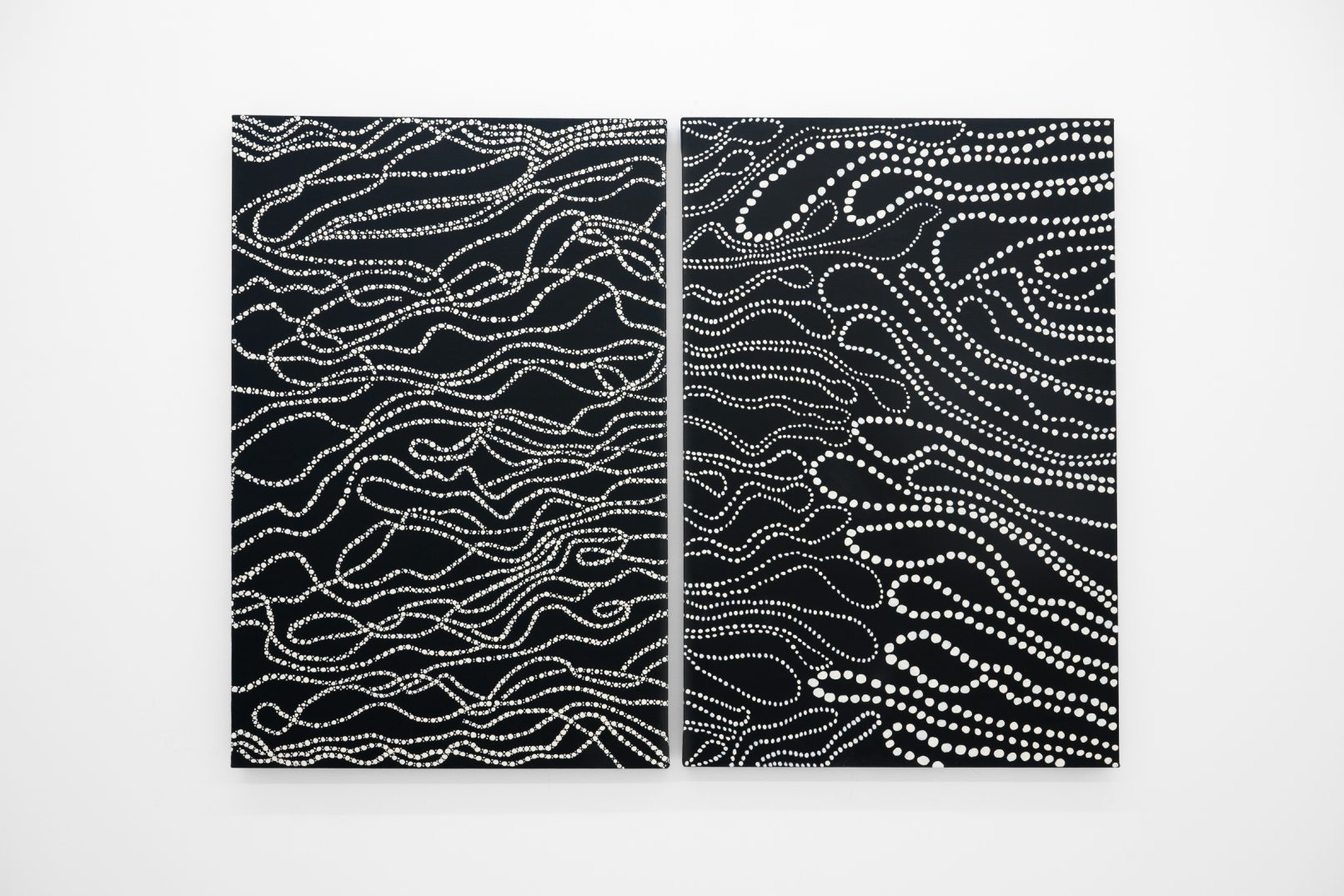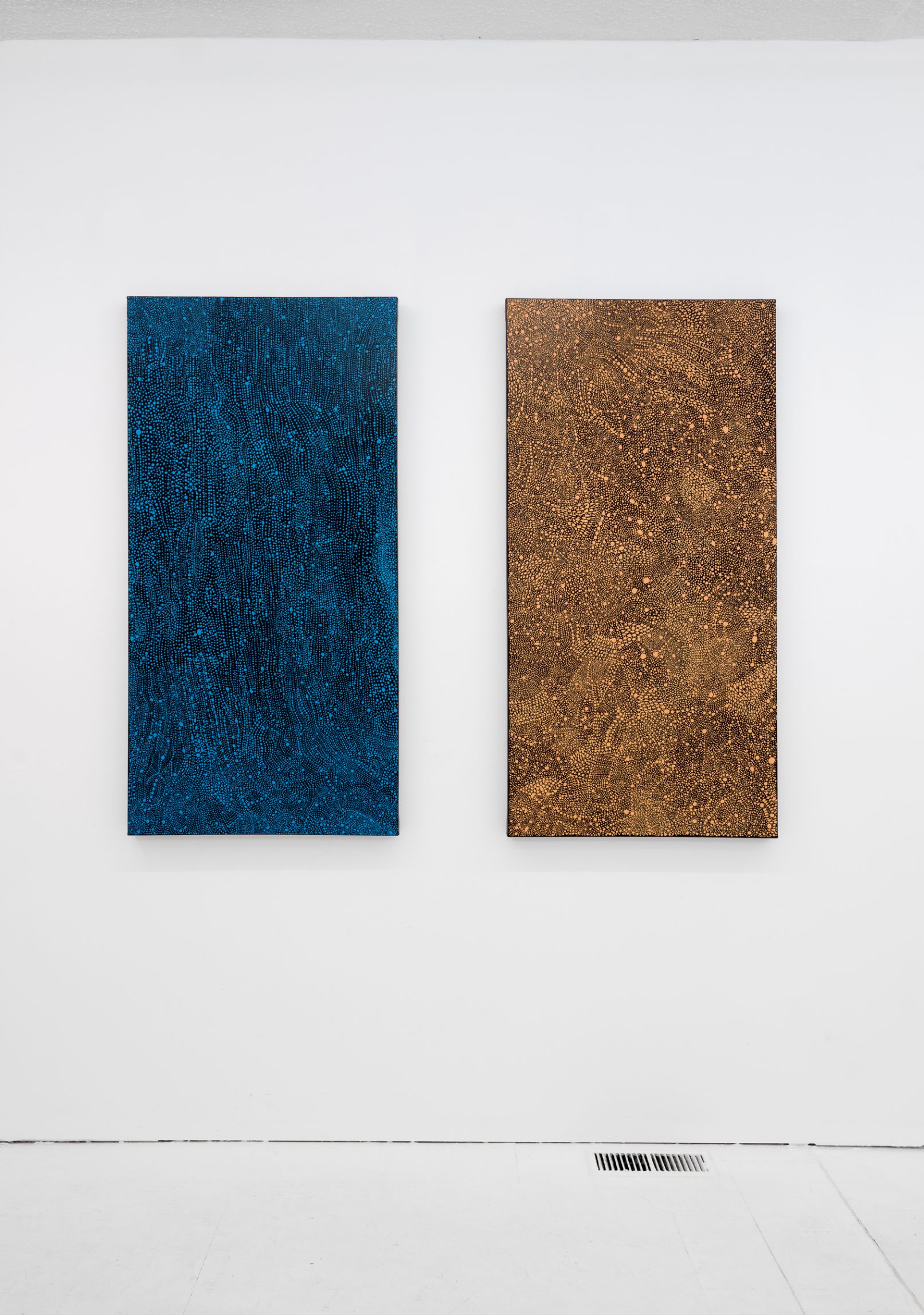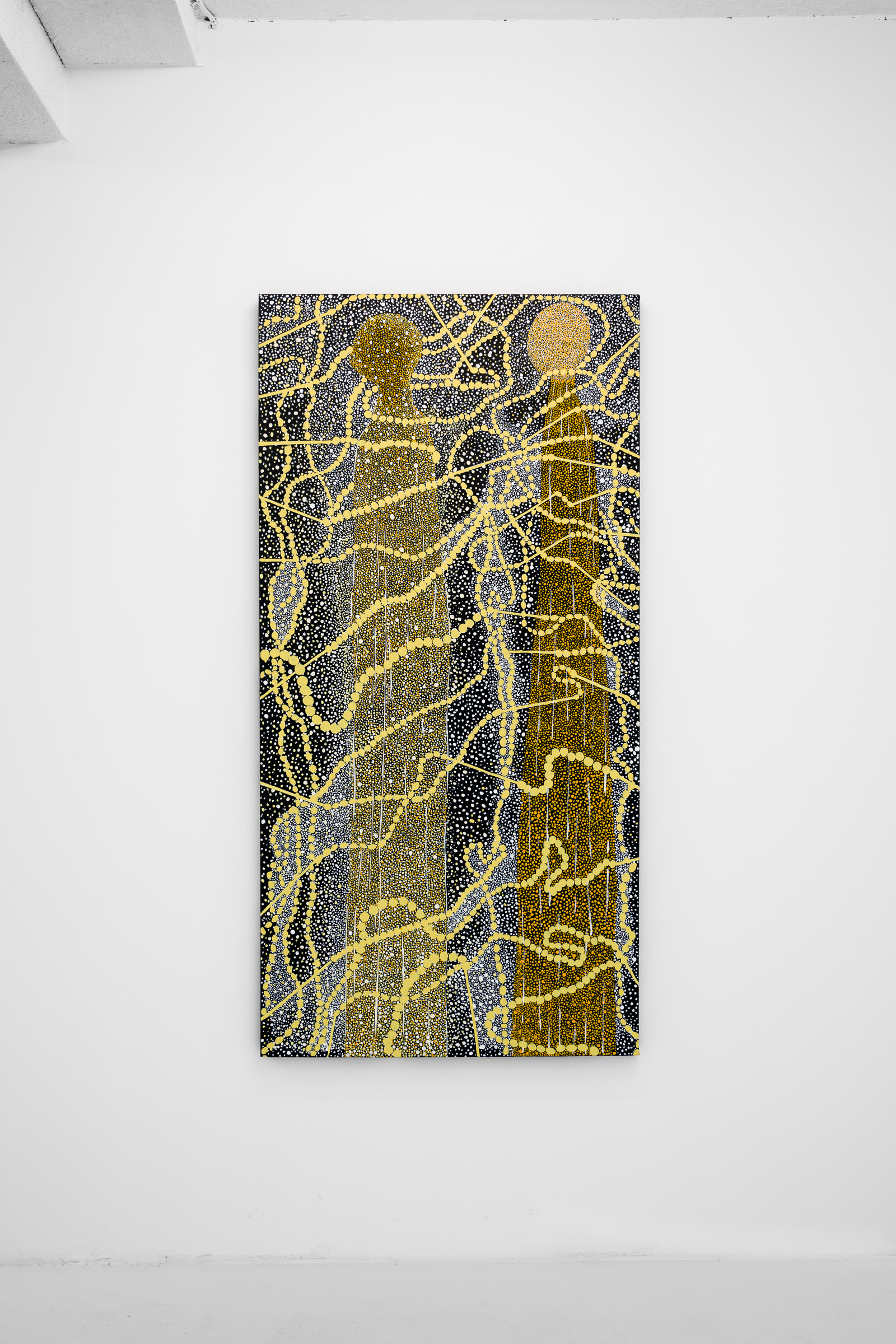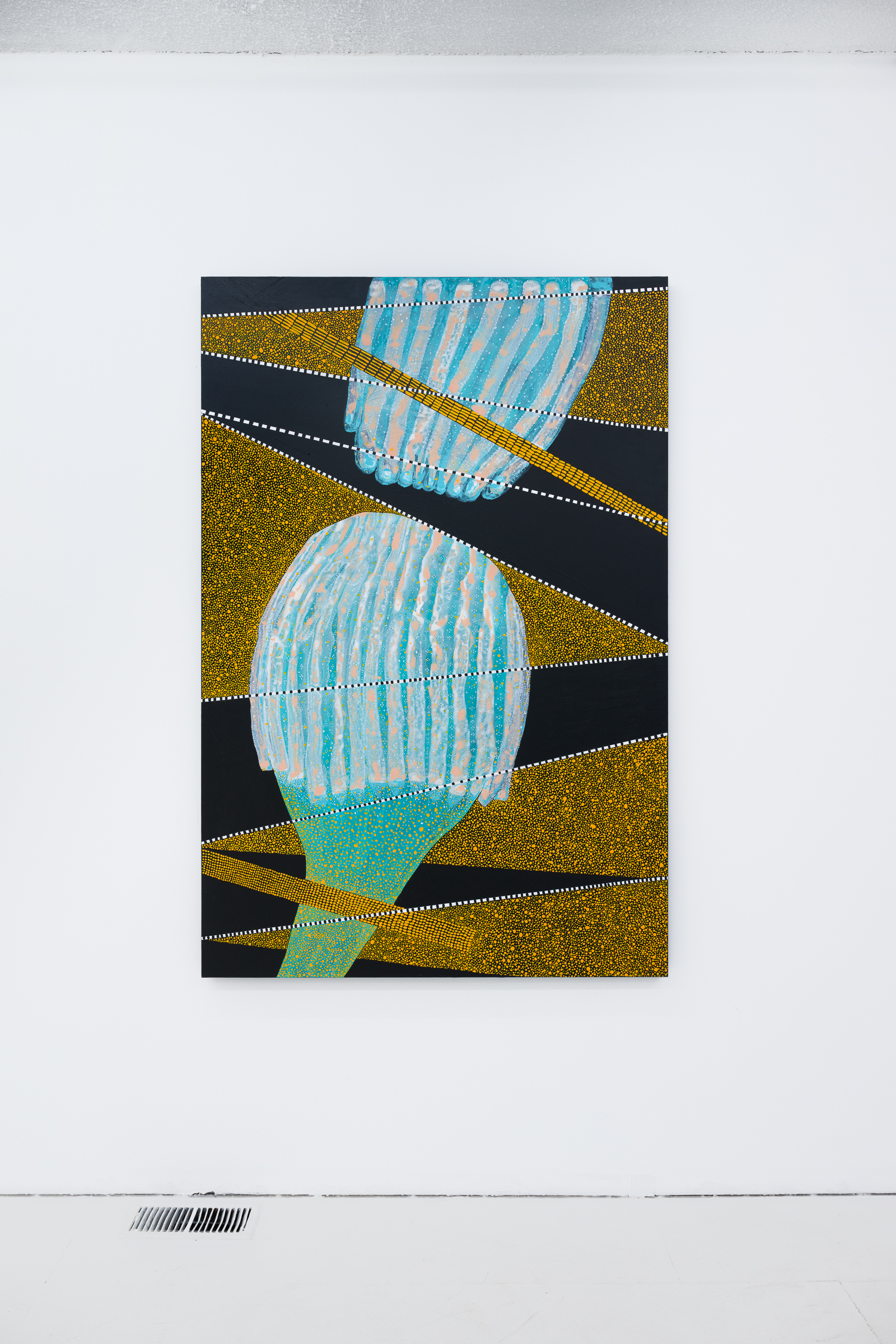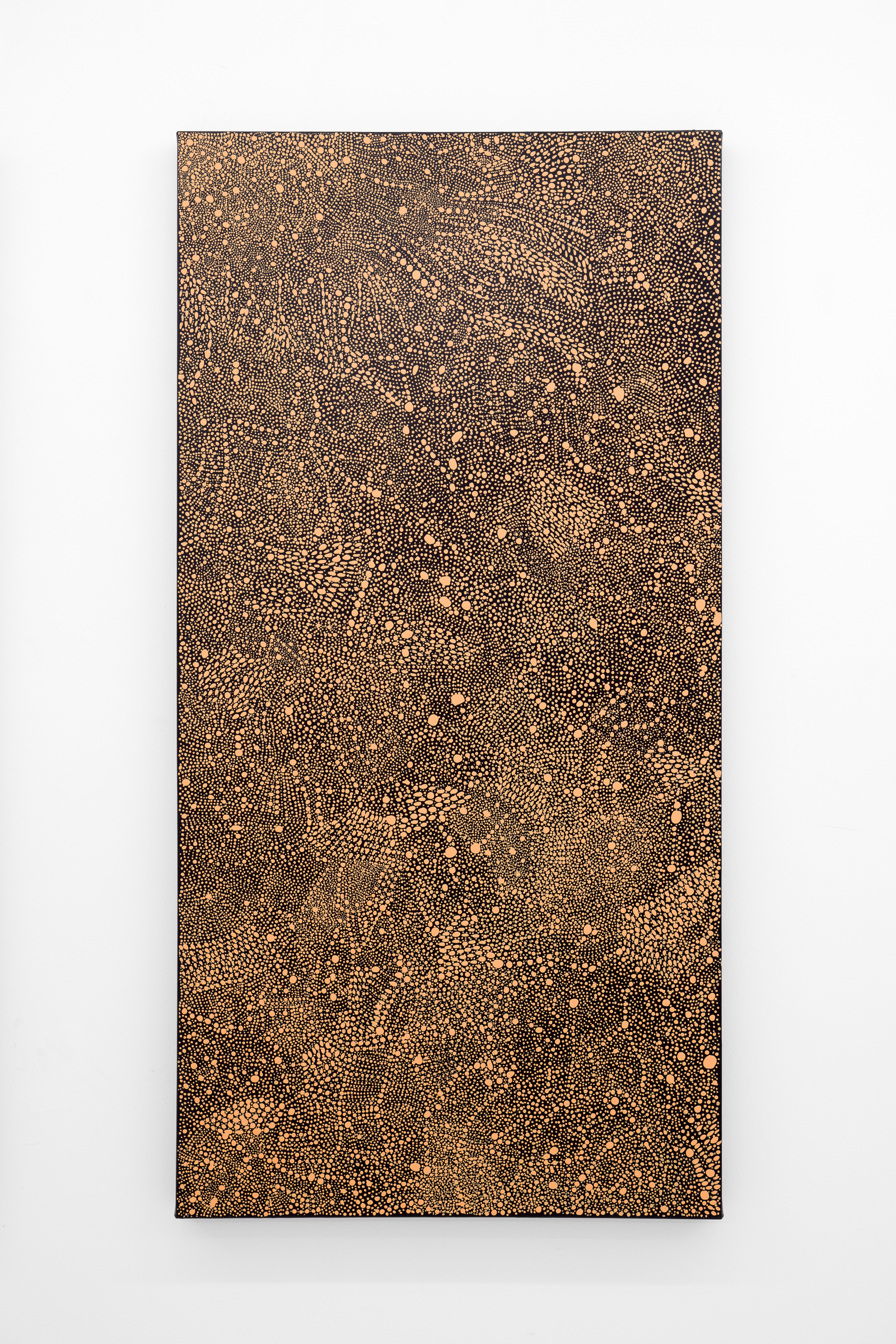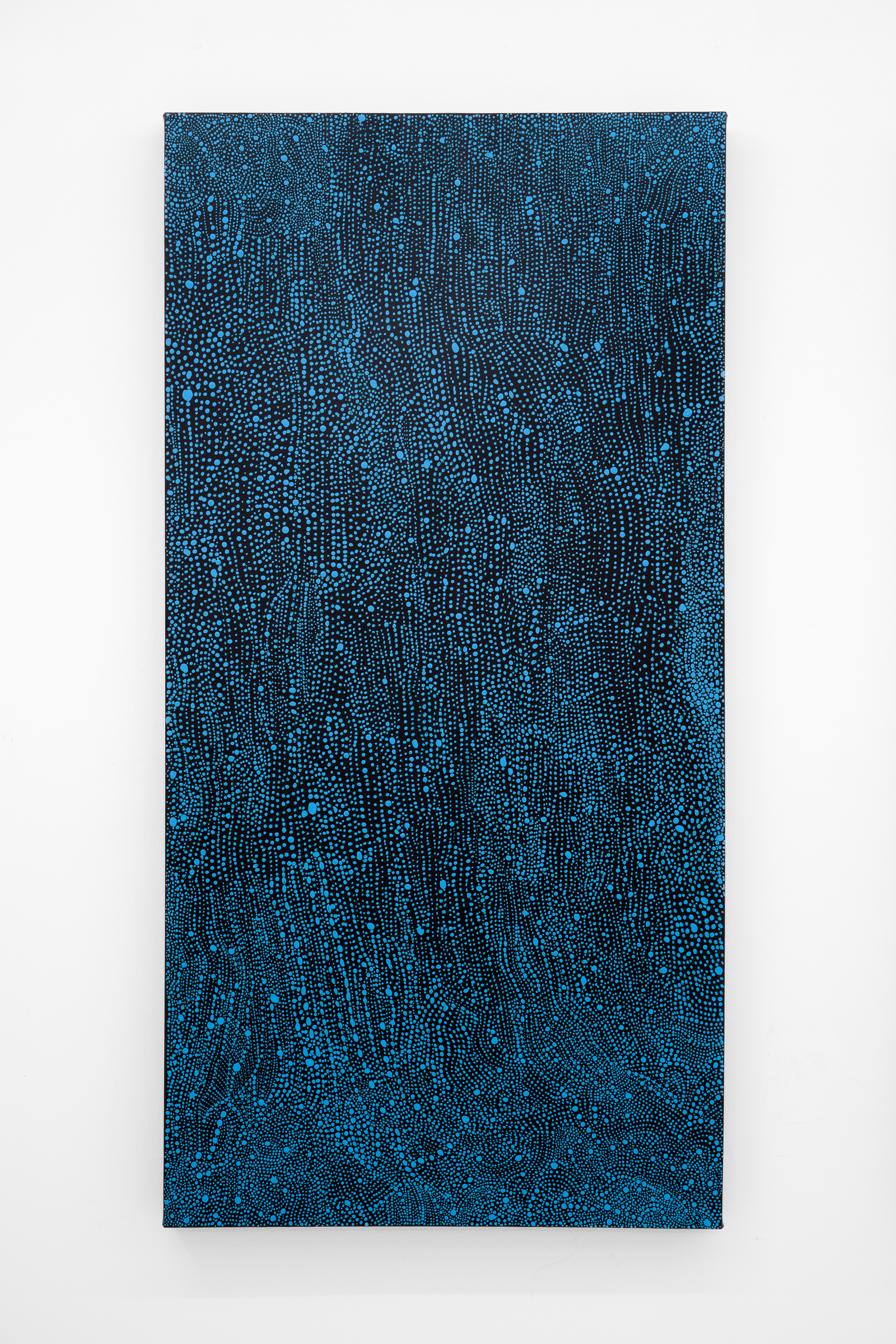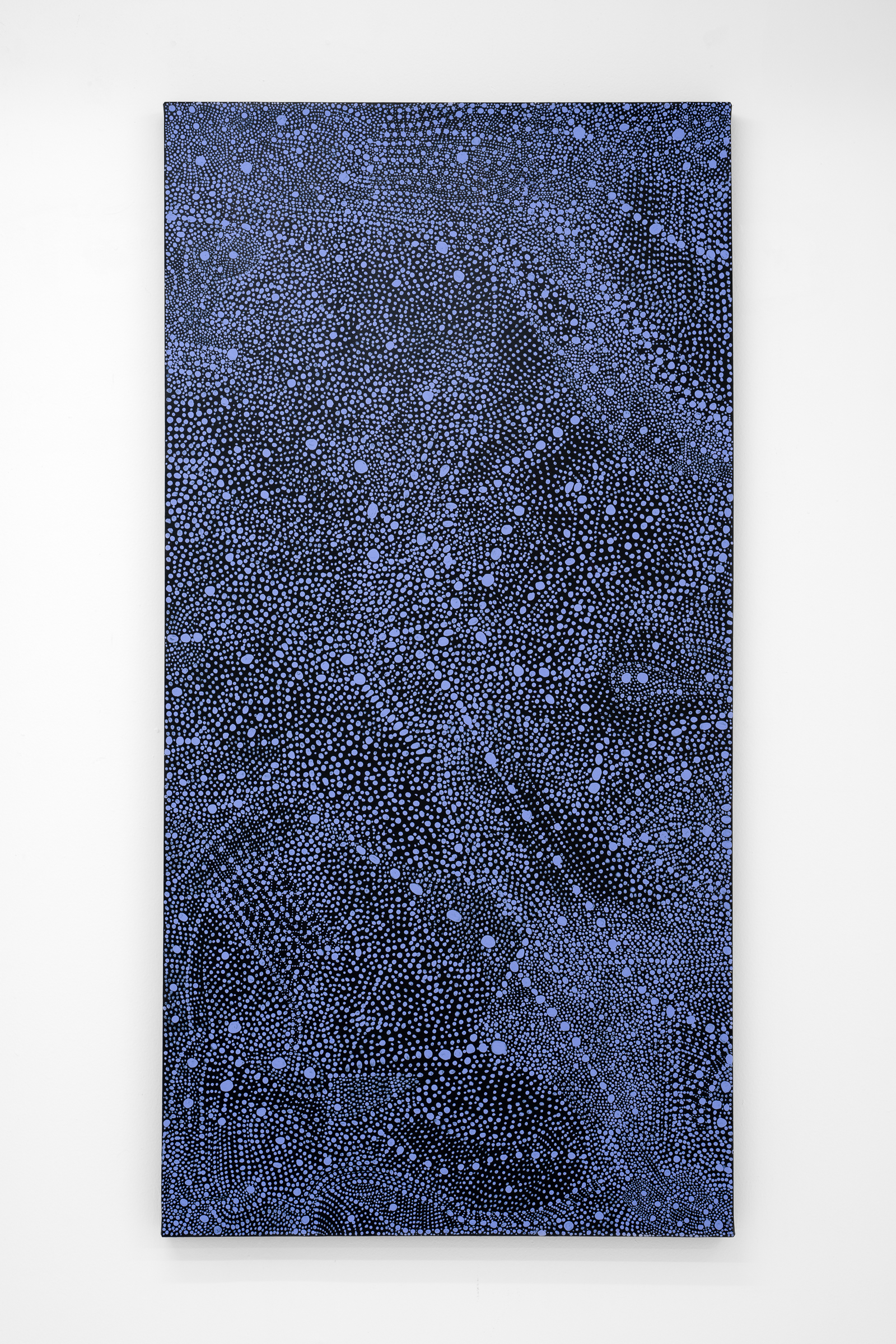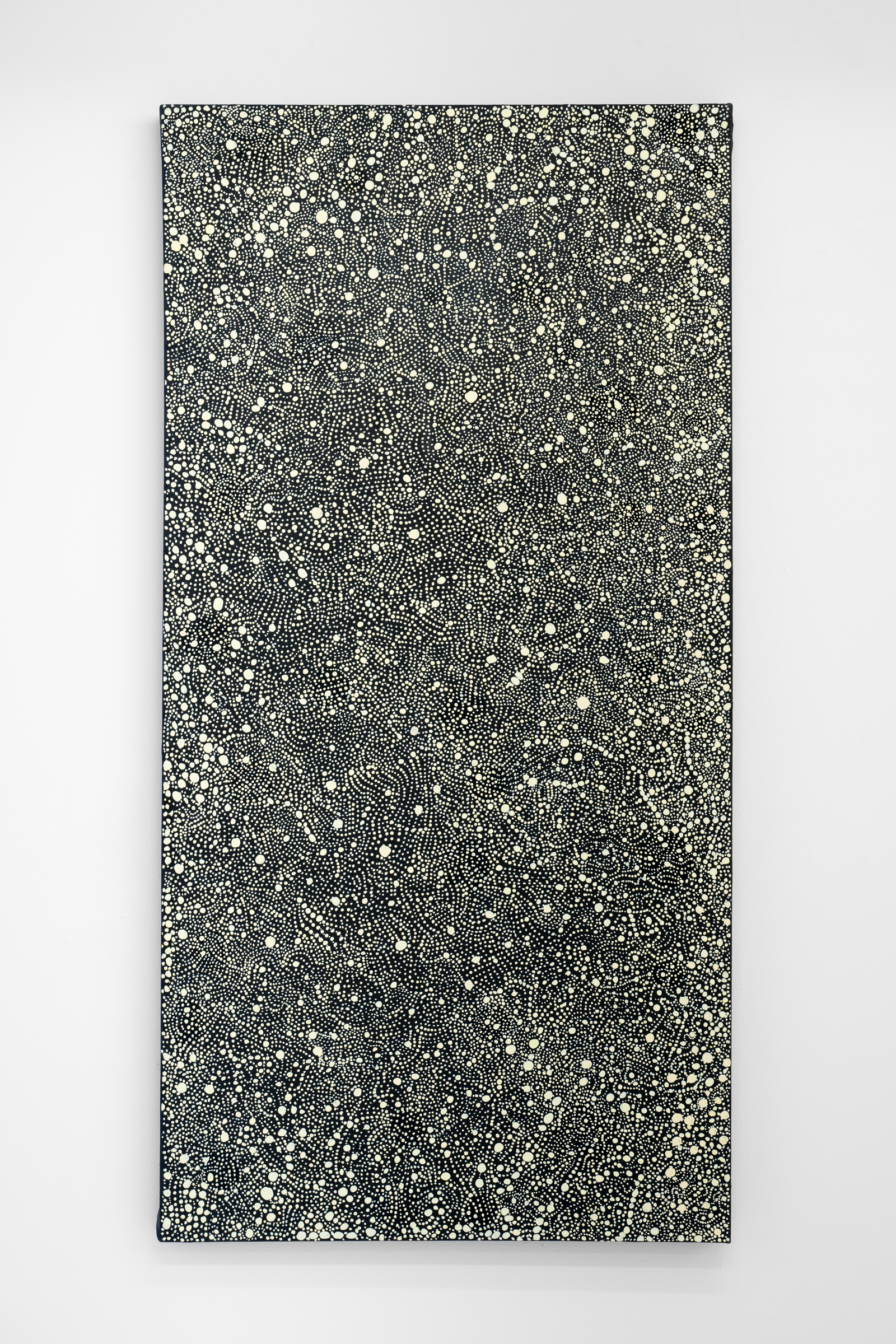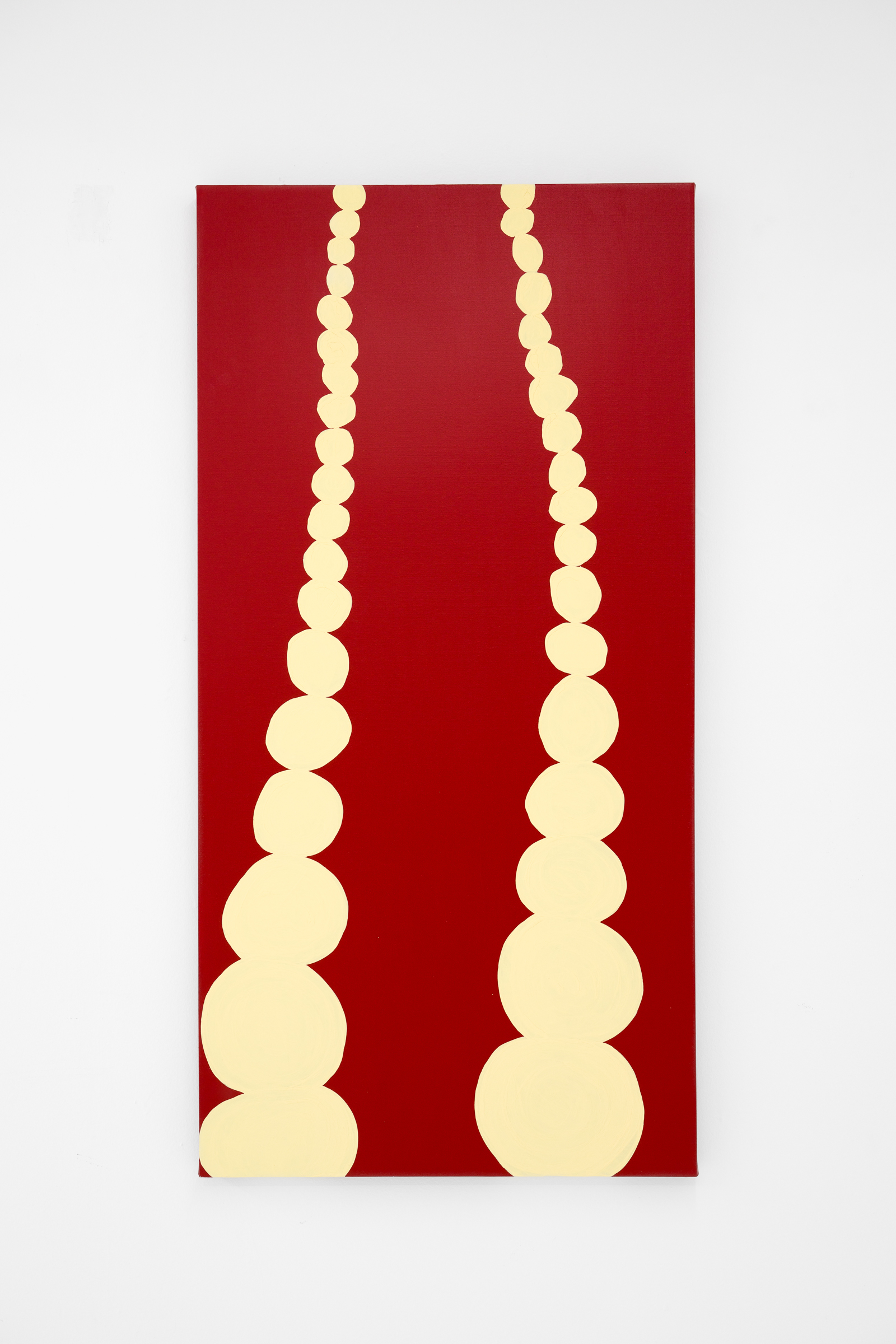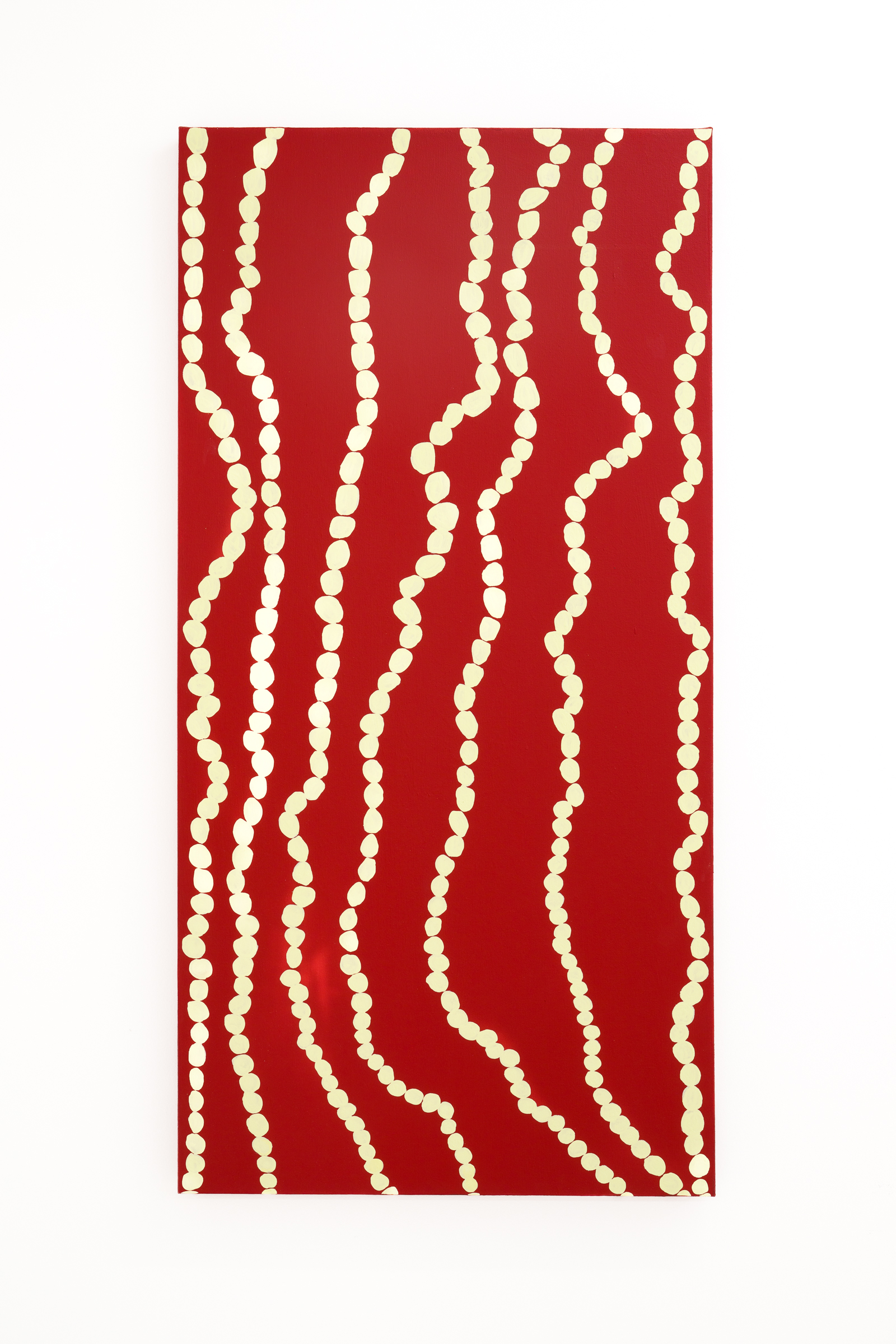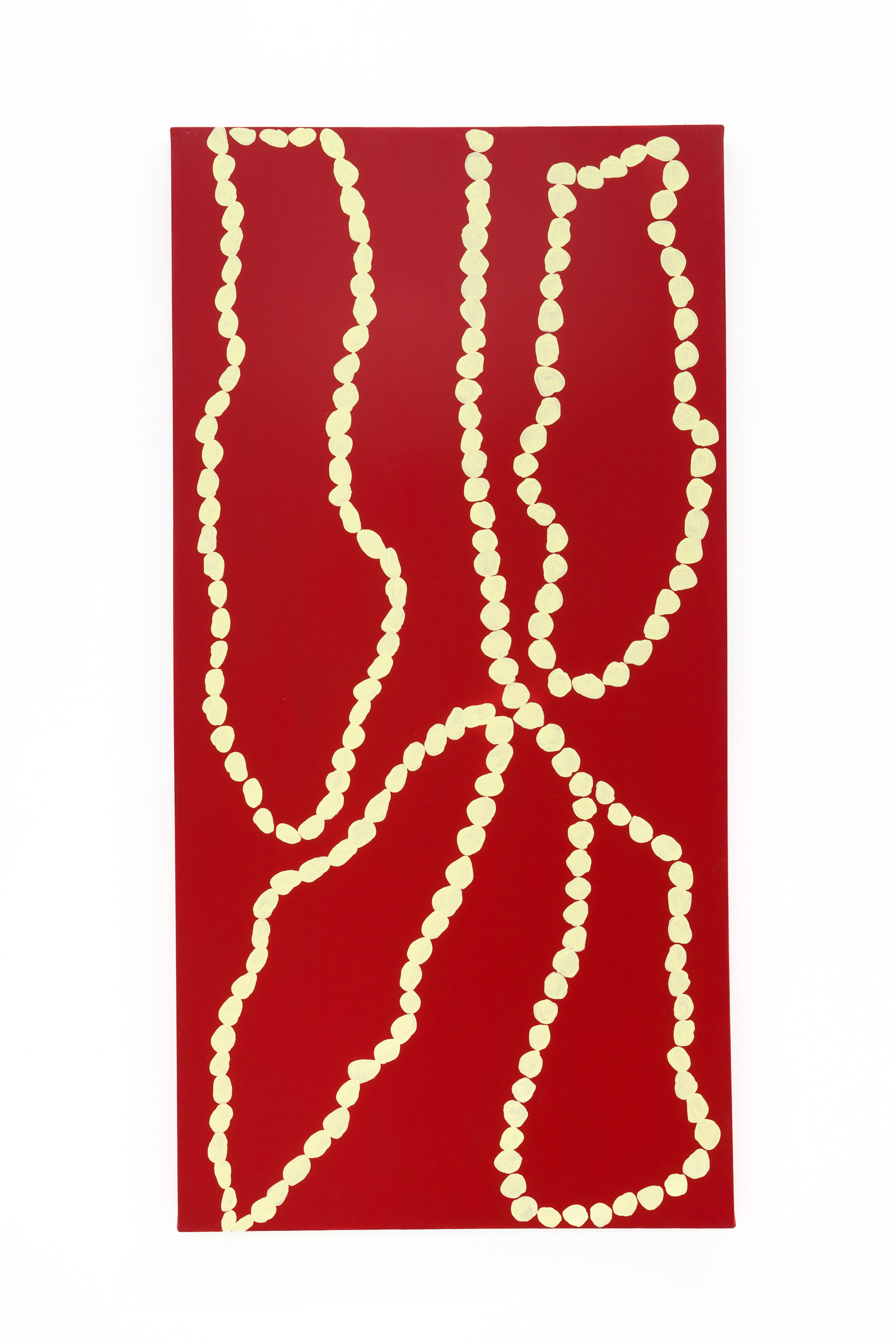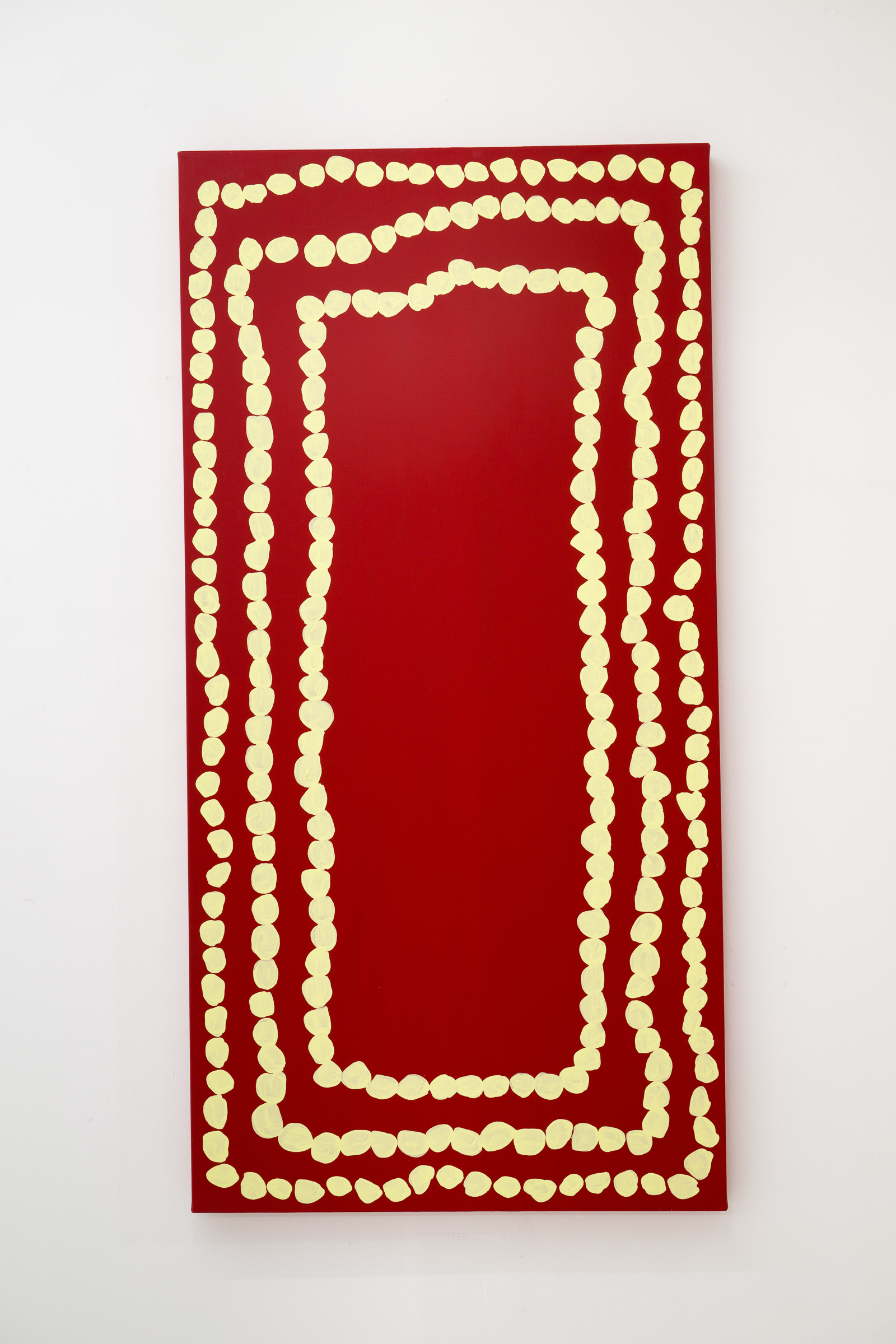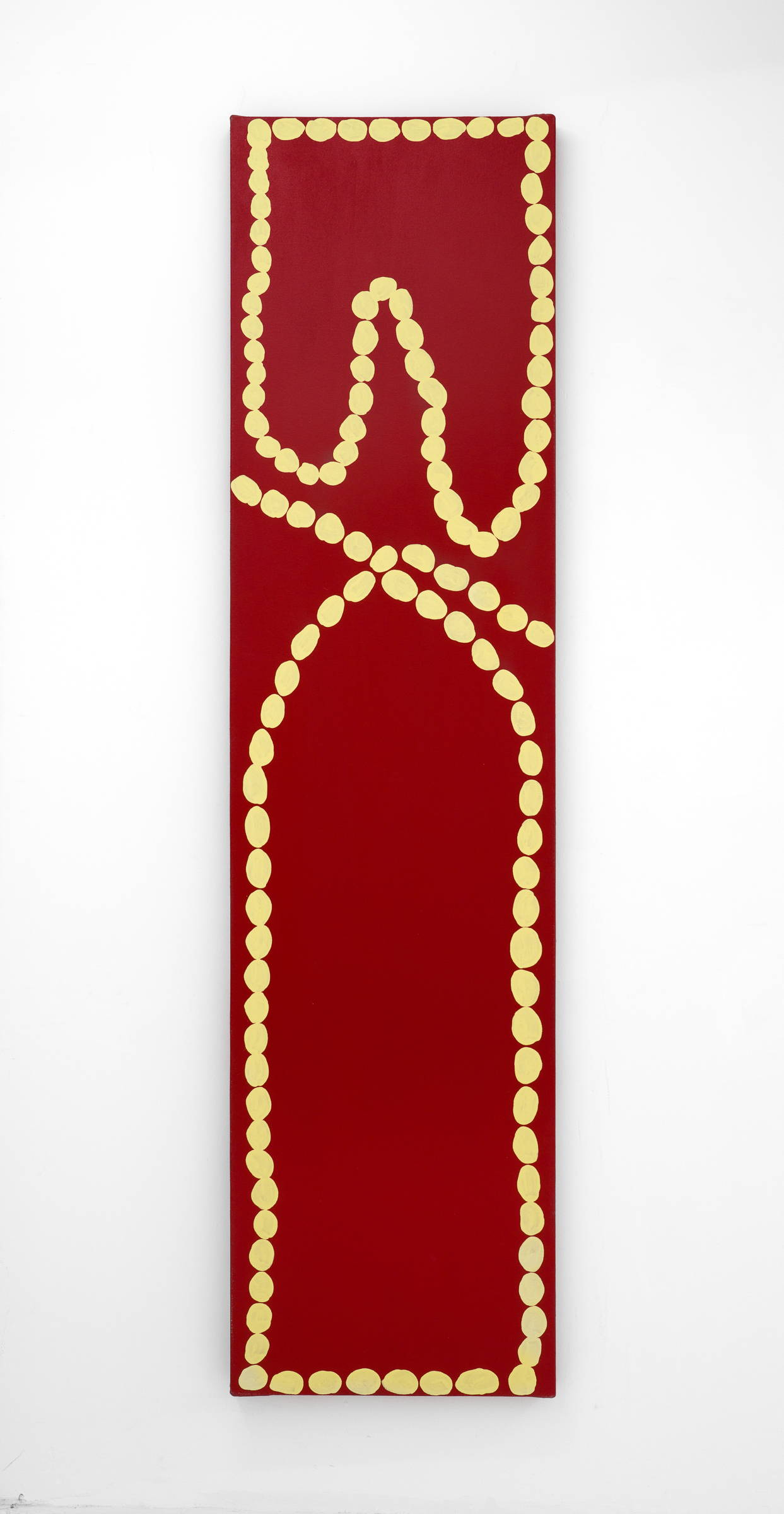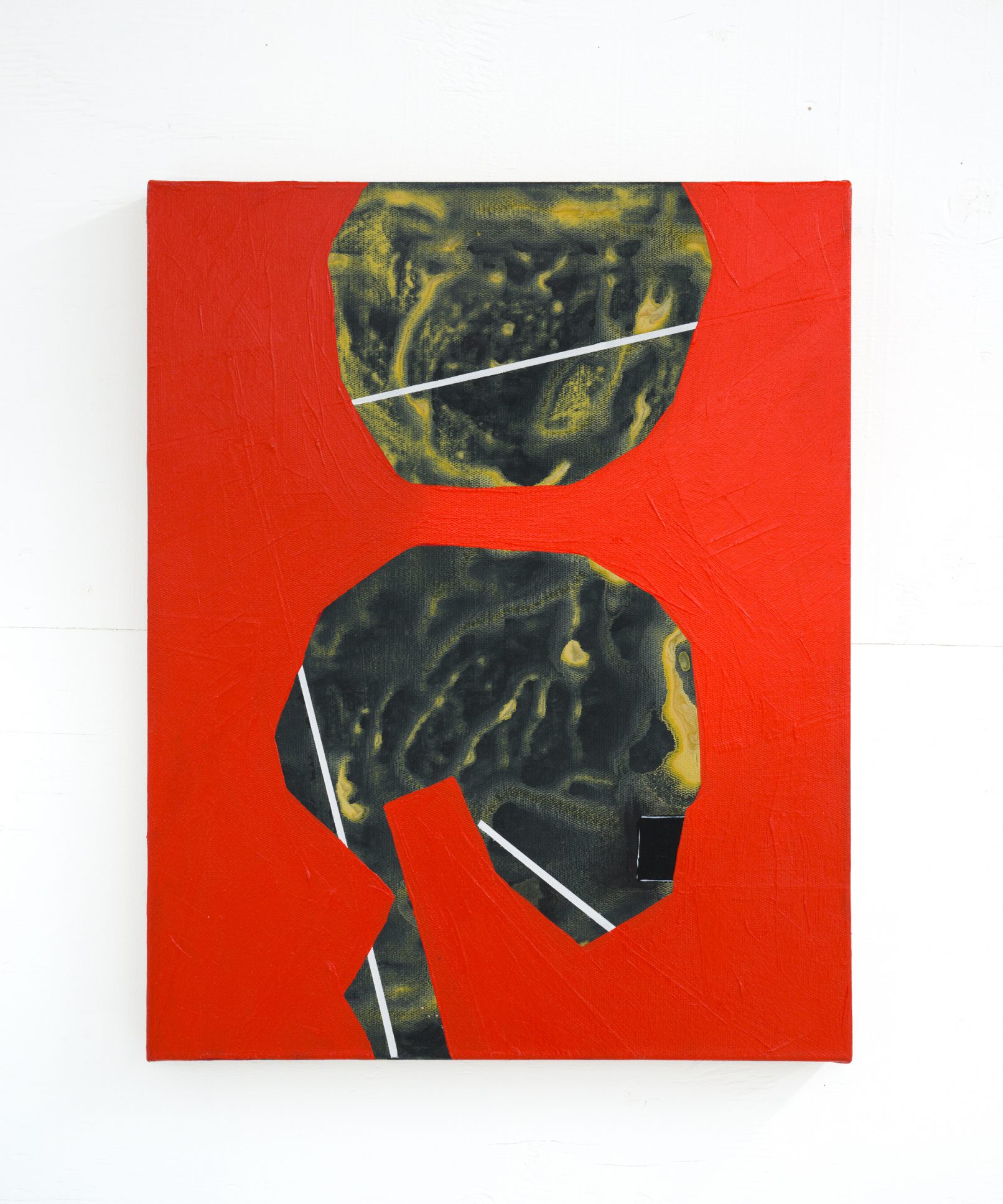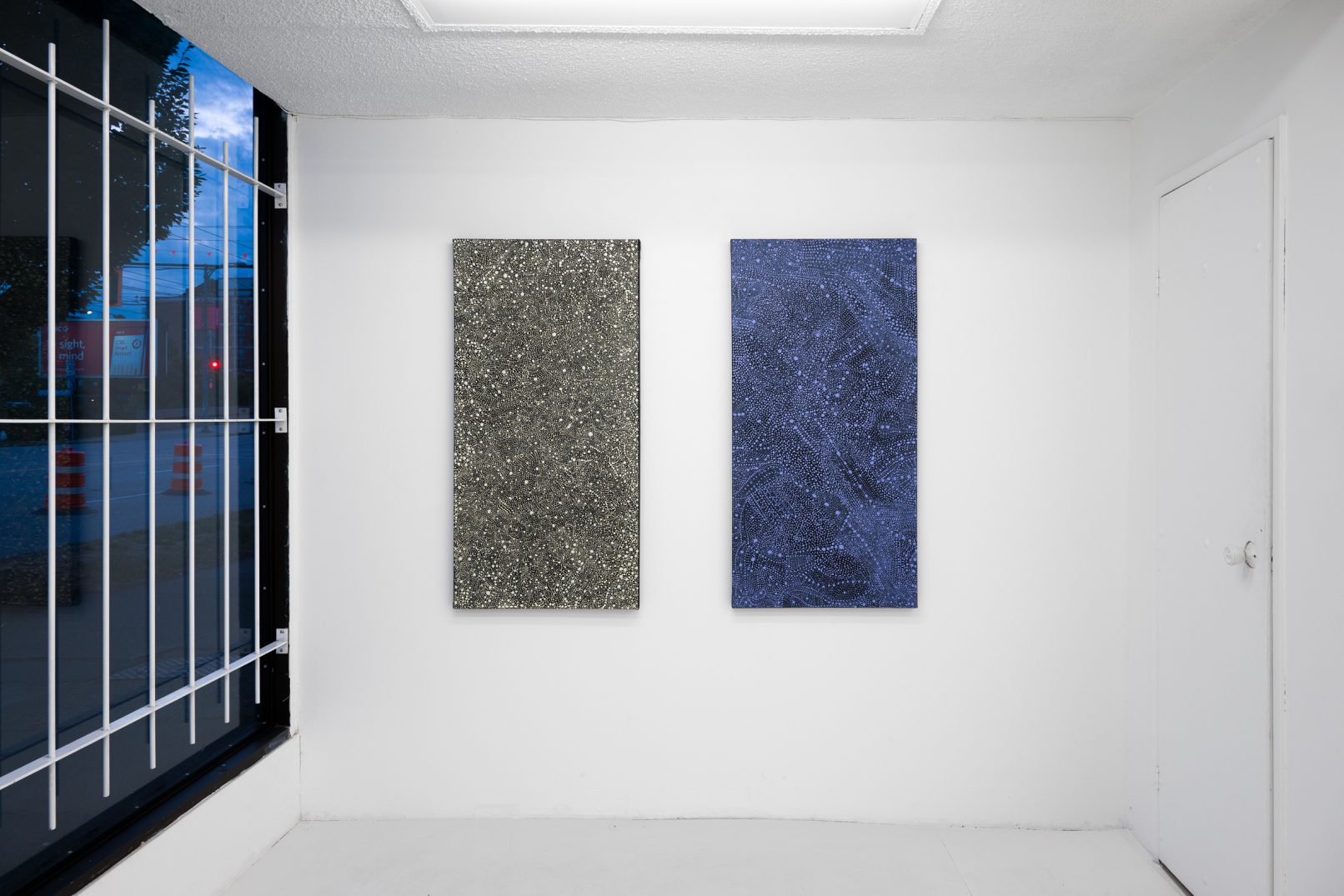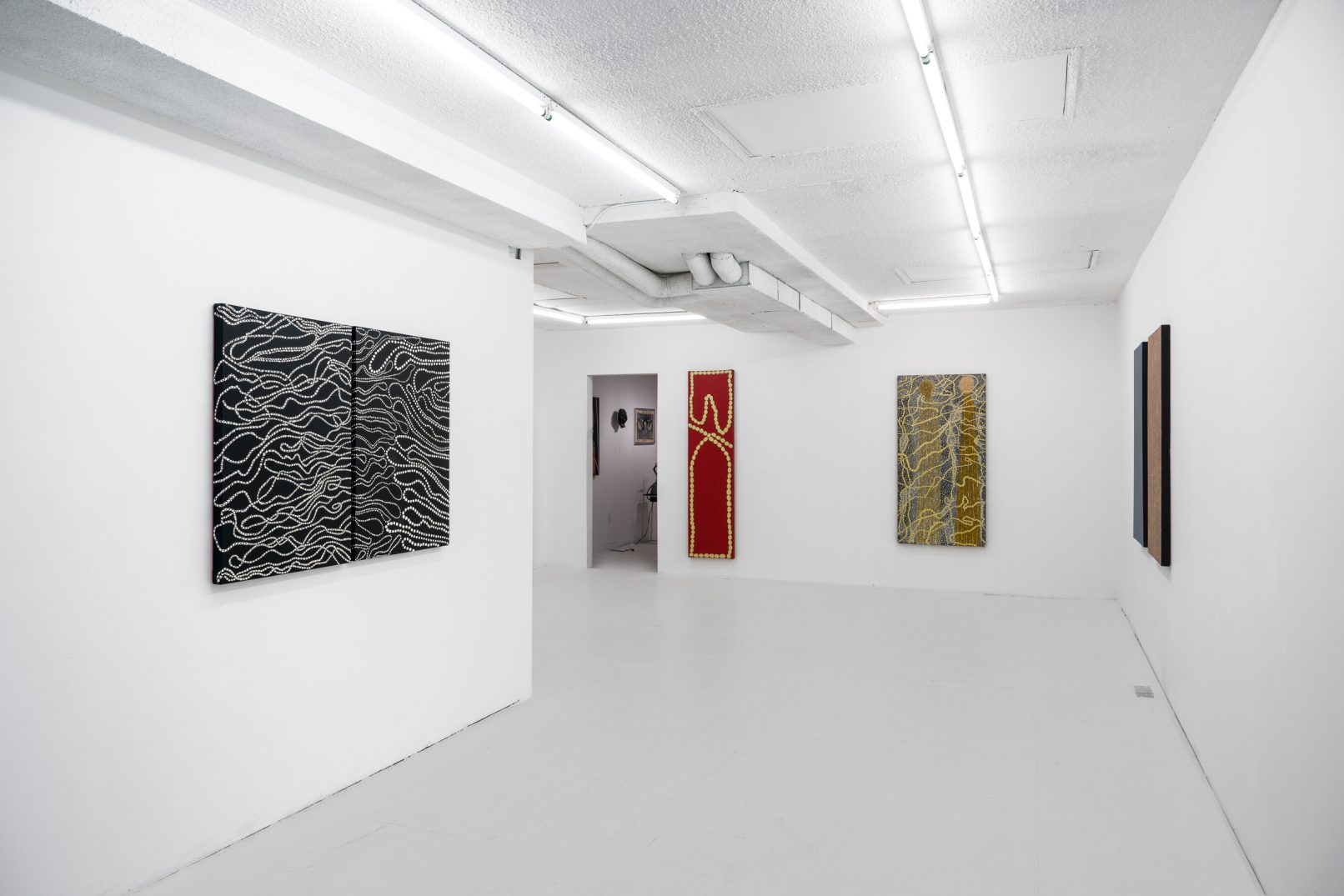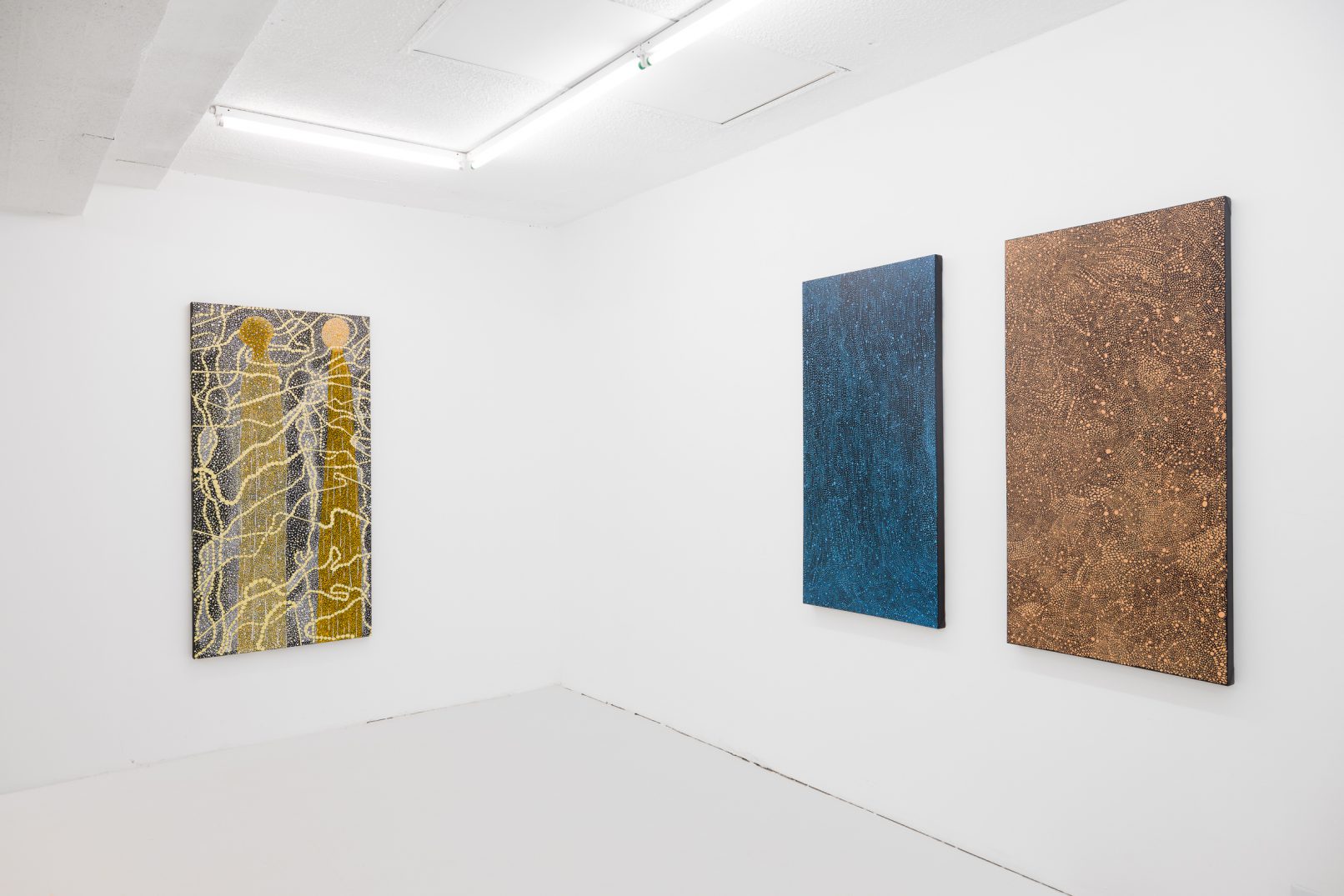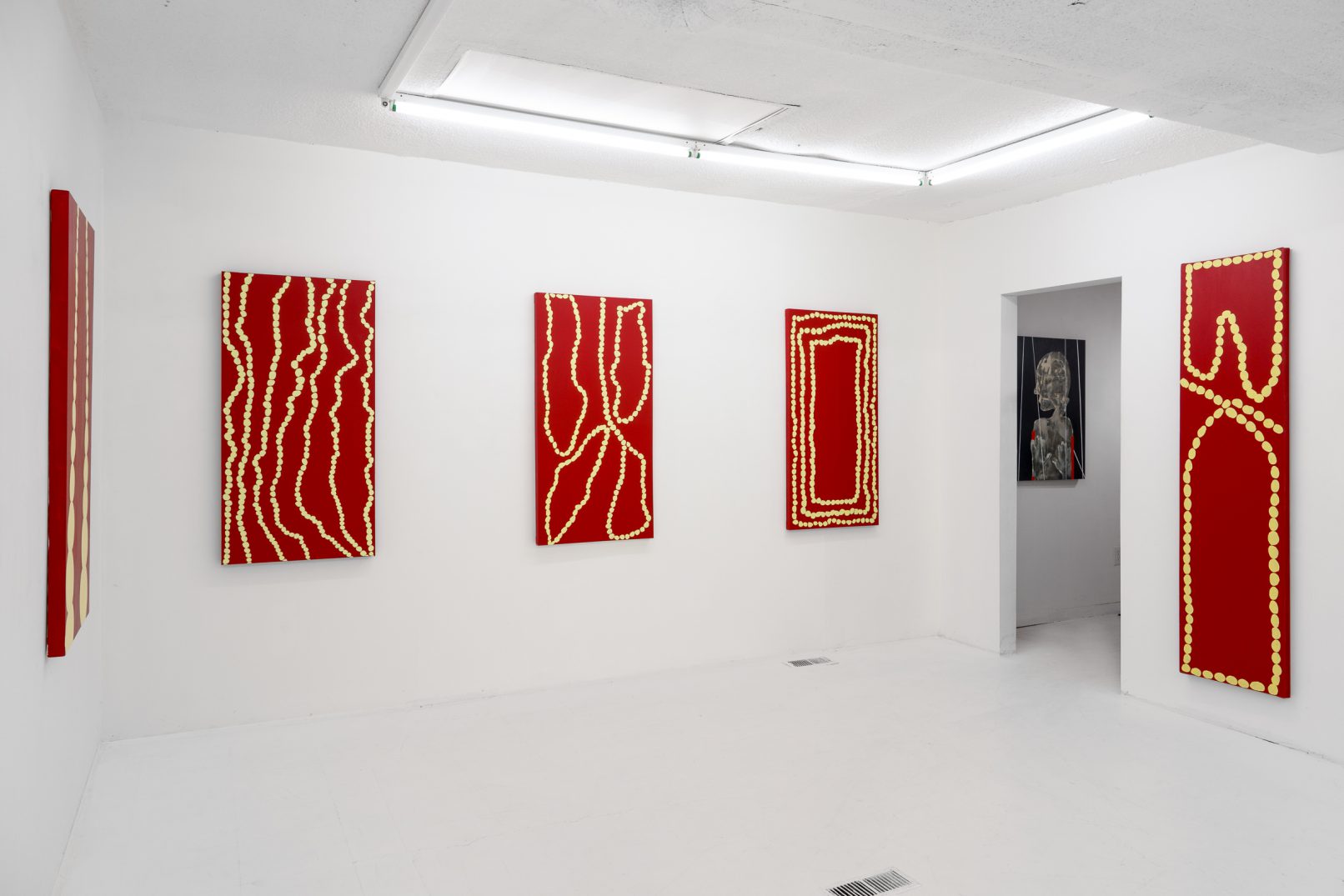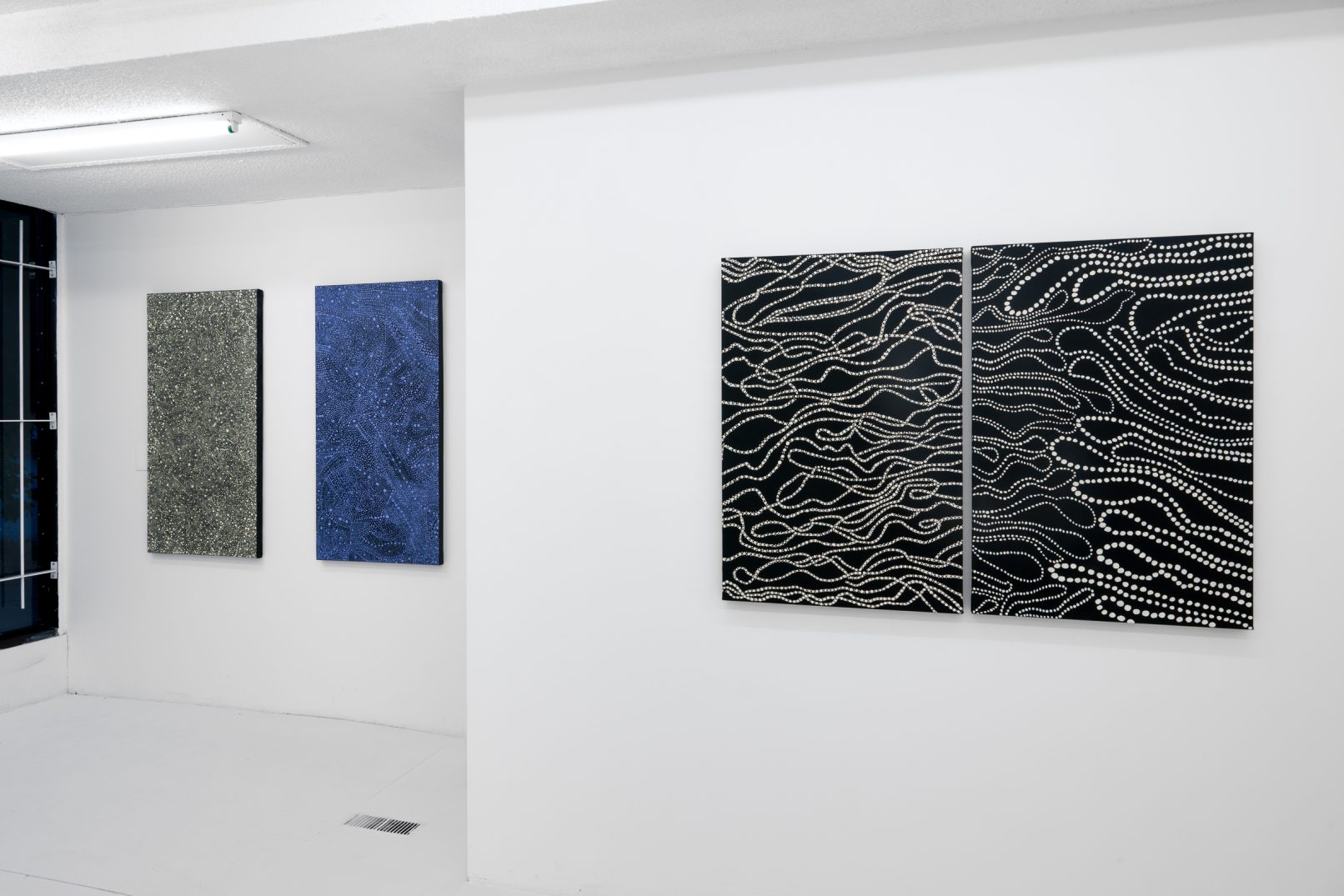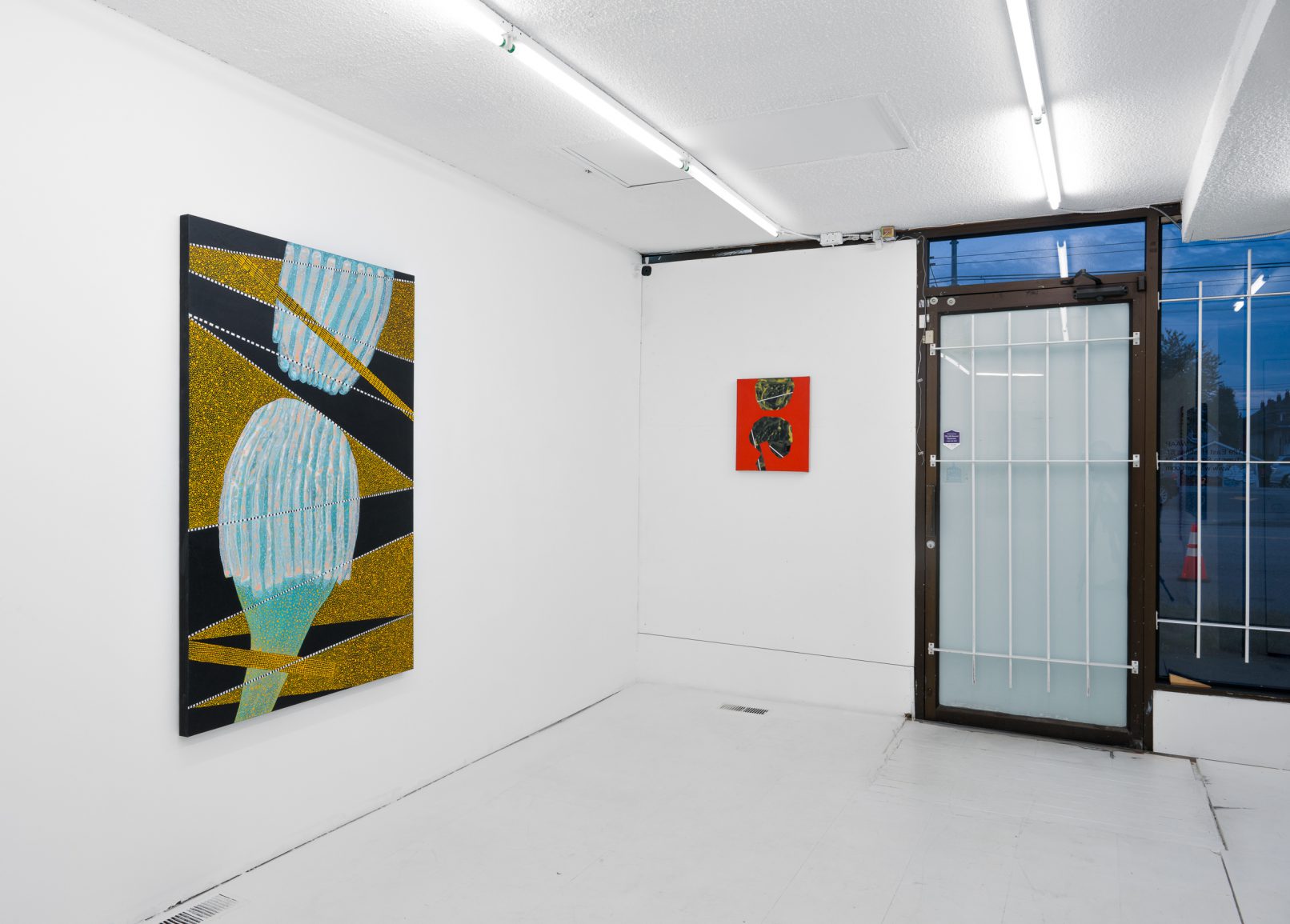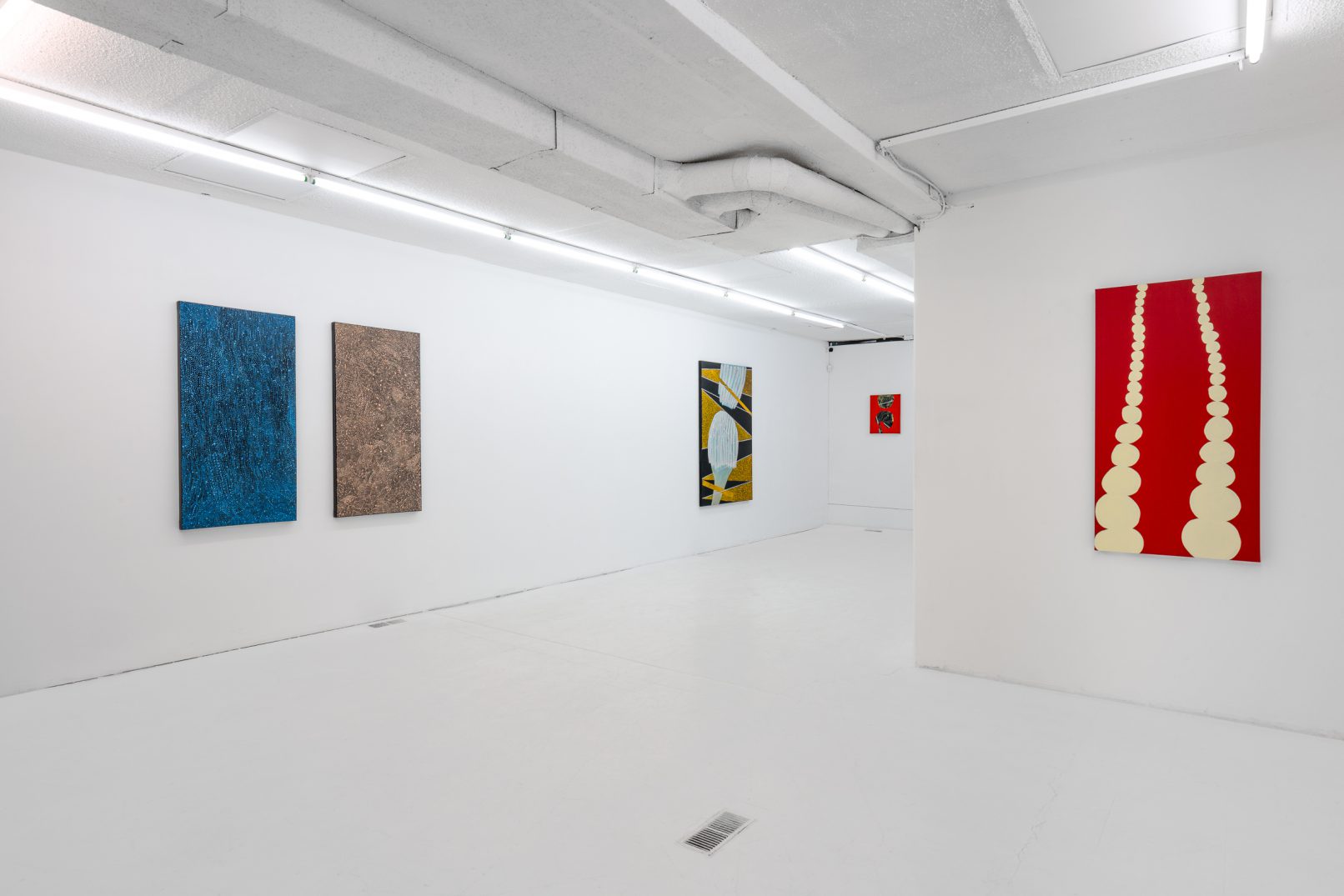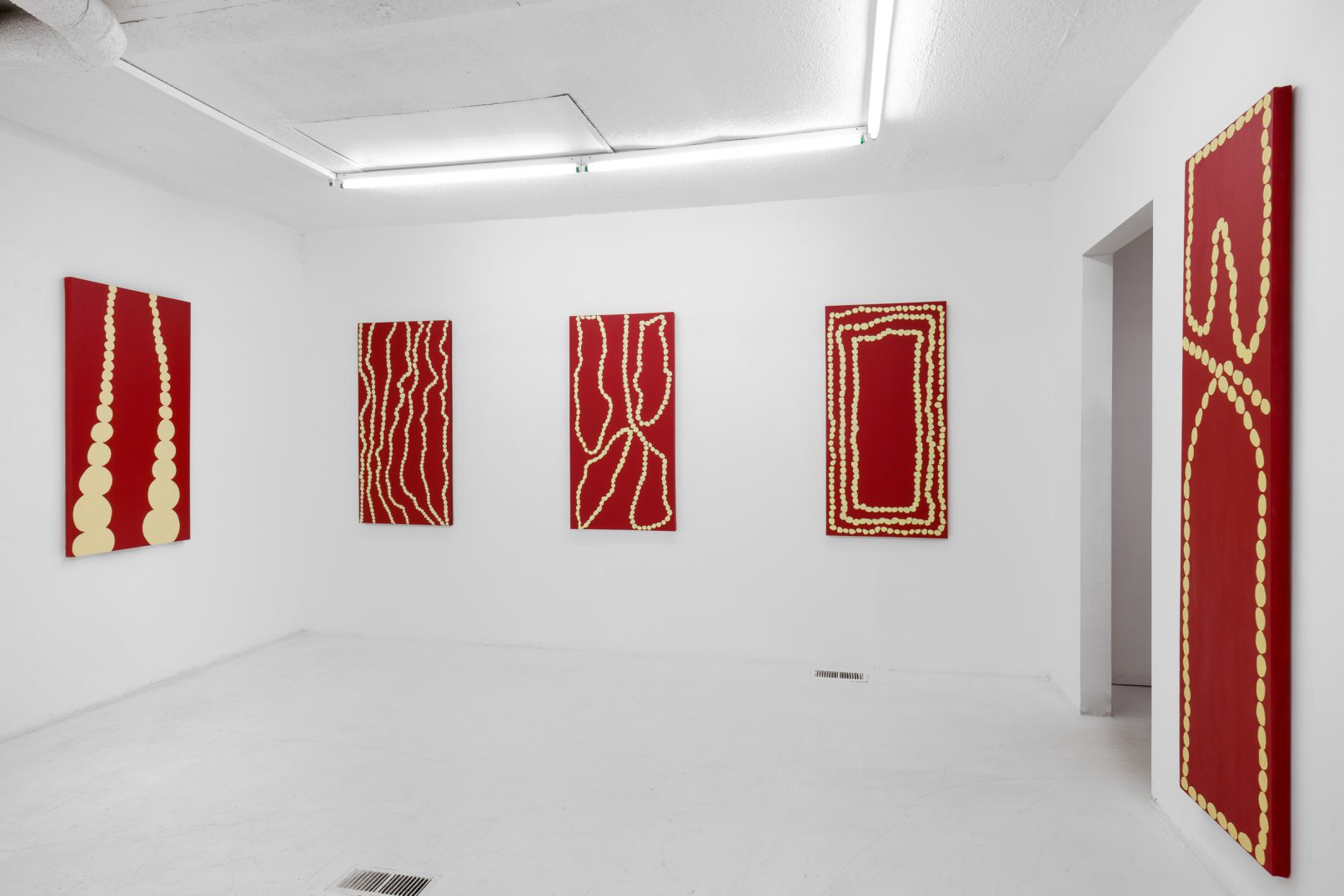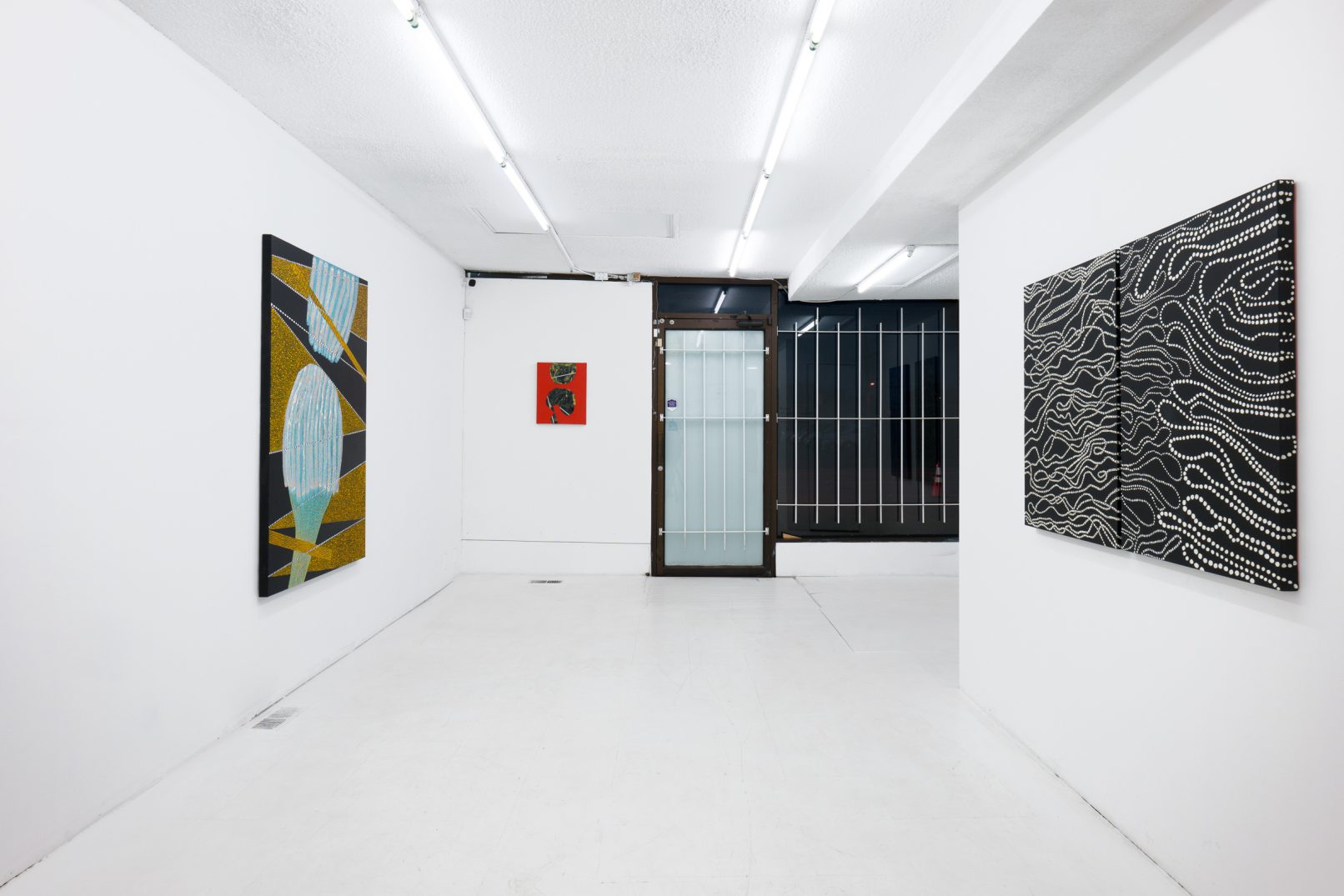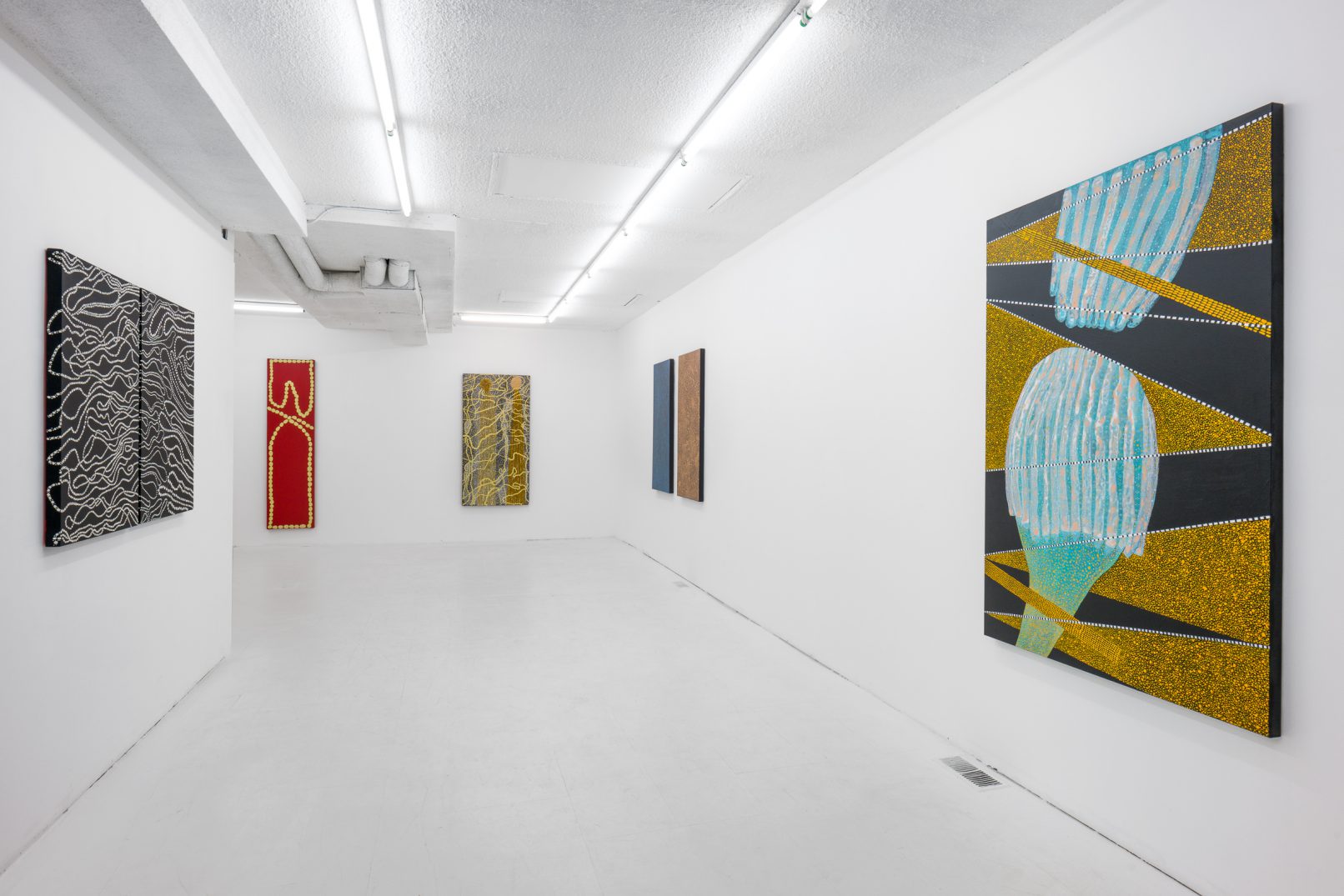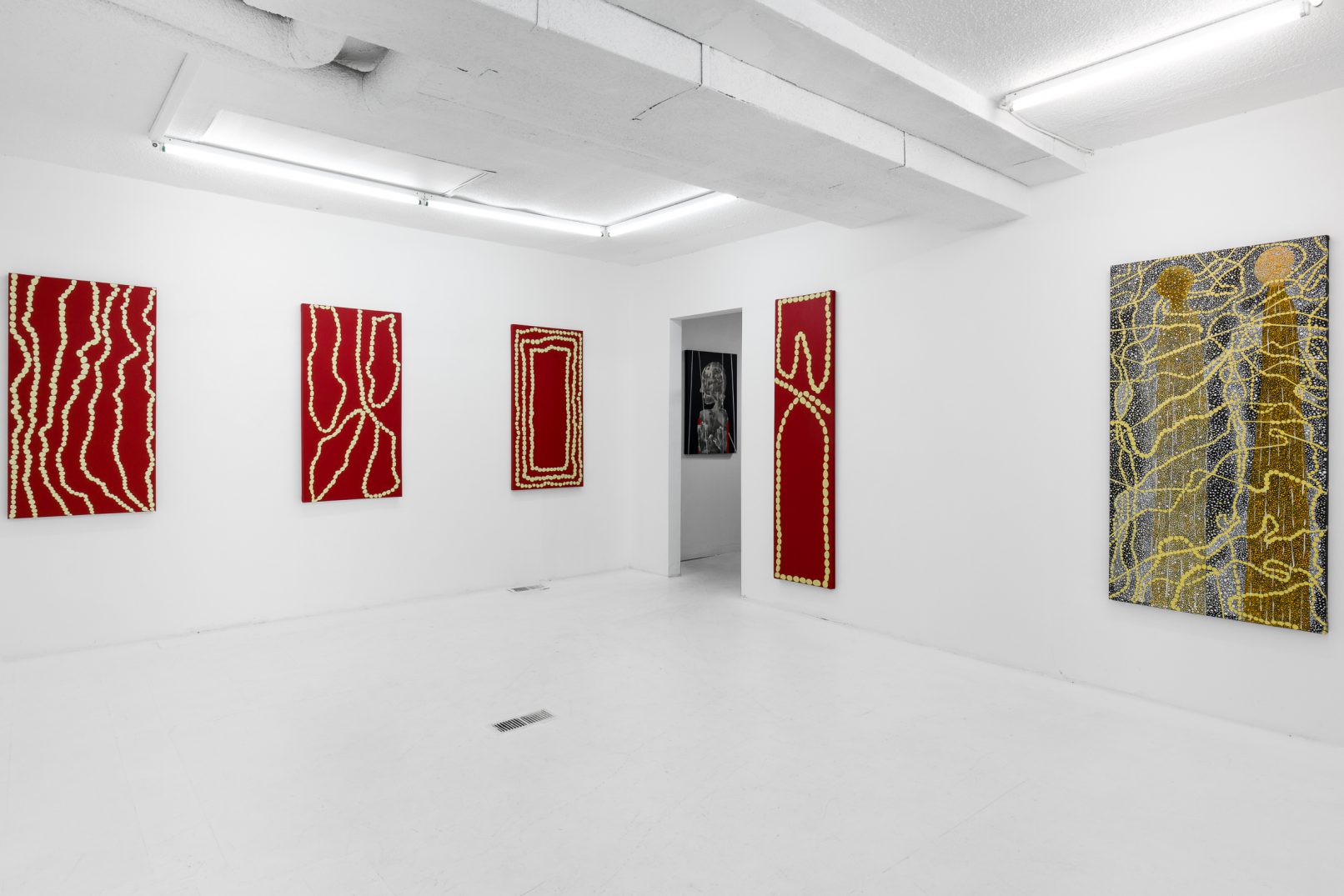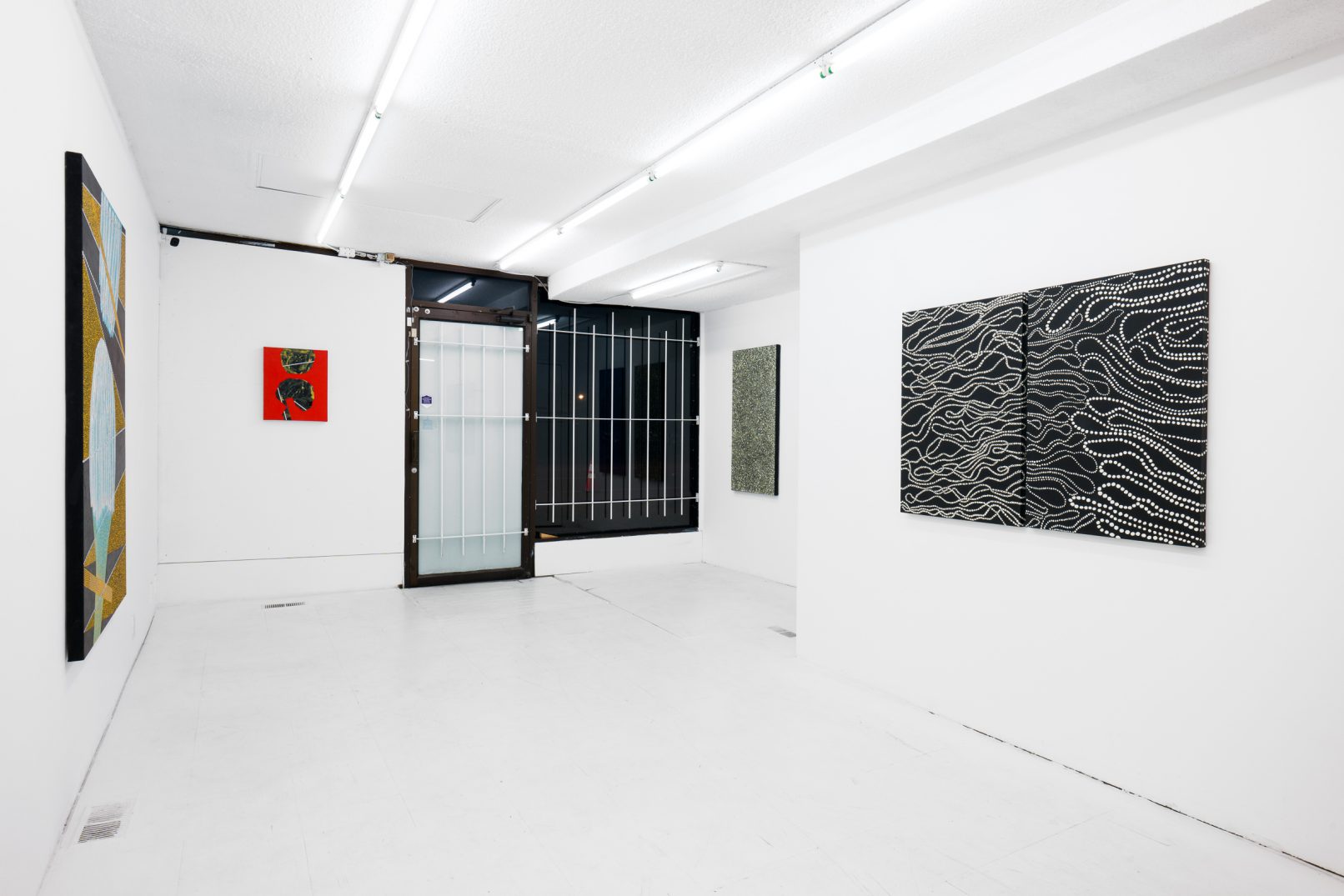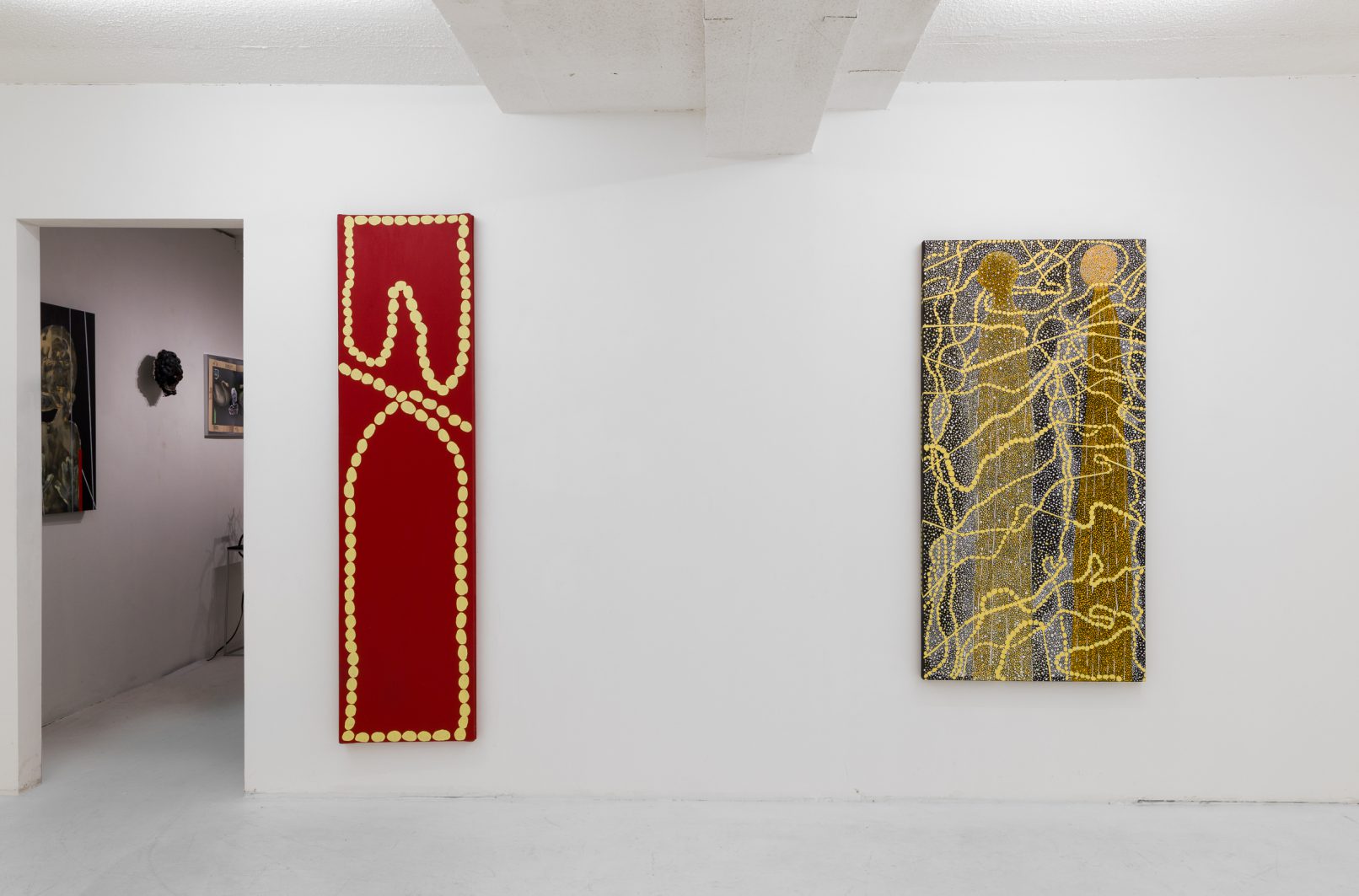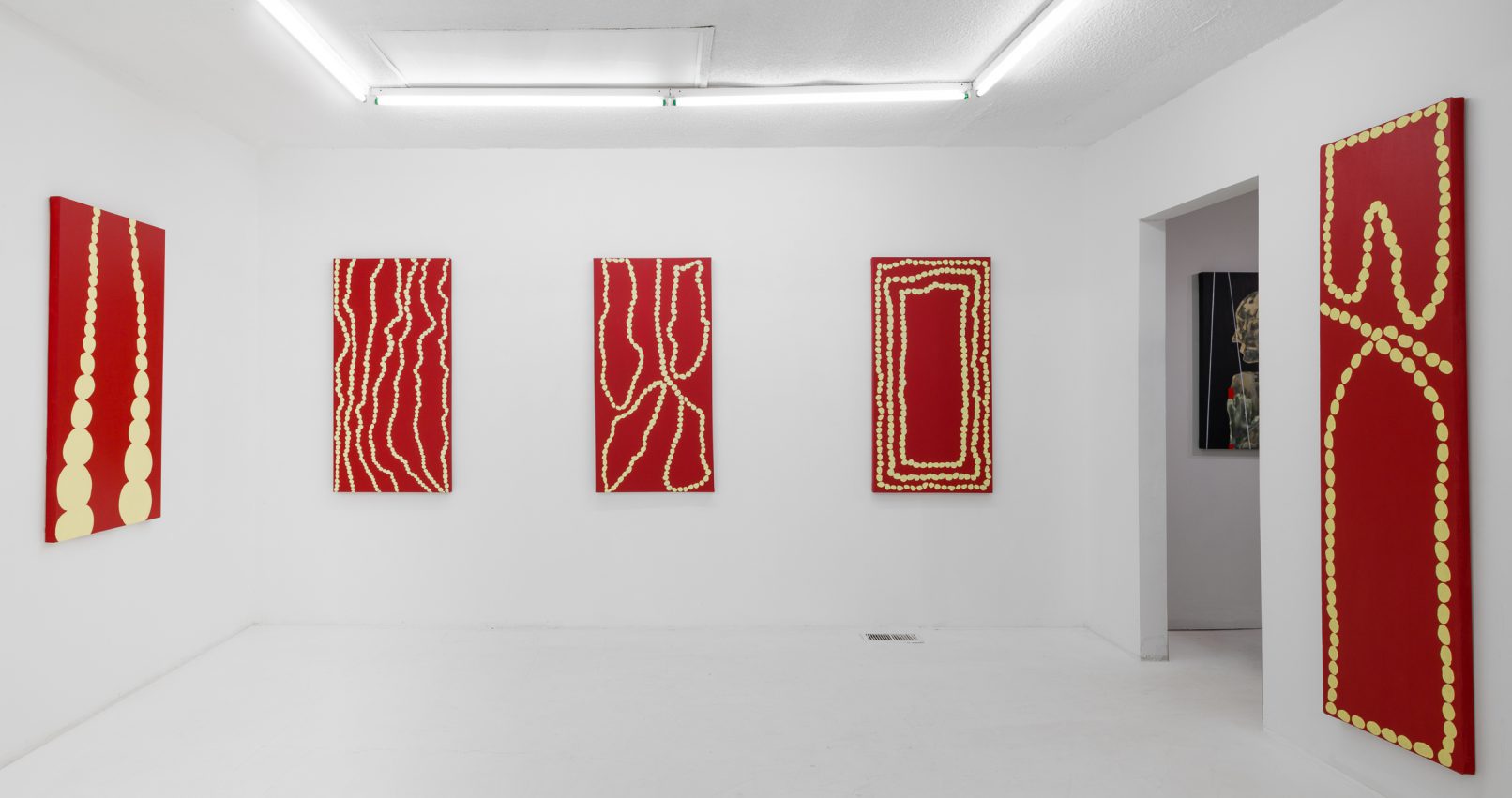LYSE LEMIEUX: AM STRAM GRAM Sep 16 – Oct 14
LYSE LEMIEUX
AM STRAM GRAM
Opening: Saturday, September 16, 2023, 2-4 PM
Exhibition: September 16 – October 14, 2023
Hours: Tues to Sat, 12-5 PM
WAAP
1129 East Hastings St.
Vancouver, BC
Canada V6A 1S3
www.waapart.com
@waapart
Am, stram, gram,
Pic et pic et colégram,
Bour et bour et ratatam,
Am, stram, gram.
AM STRAM GRAM is a French language song with repeated rising and falling rhythms and a singsong or comptine, the artist remembers singing as a child. Lemieux’s new body of work spans a period of two years and weaves in and out of the artist’s longstanding interest in figuration, abstraction, pearls, lace, turning points and all intervals in between.
Lyse Lemieux (Canadian, b.1956 in Ottawa) has exhibited nationally and internationally; Her interdisciplinary practice focuses on drawing and painting and includes sculpture and installation. In recent years her practice has expanded to include outdoor, large scale Public Art projects. Lyse Lemieux is the 2017 recipient of the VIVA AWARD granted annually by the Doris and Jack Shadbolt Foundation for the visual Arts. Recent solo exhibitions include Interwoven (2023) at Loftyart Gallery in Taipei, So dawn goes to day (2022) at the Art Gallery at Evergreen in Coquitlam and Trespassers / Intrus (2021) at the Burnaby Art Gallery in Burnaby.
Lyse Lemieux
Am Stram Gram and Zeitenwende
Text by Kathleen Ritter
Am, stram, gram,
Pic et pic et colégram,
Bour et bour et ratatam,
Am, stram, gram.
This is not so much a starting point as a point in the middle. Lyse Lemieux describes the song that has been running through her head, like an invisible companion, as she has been painting: Am Stram Gram. It is a non-sensical collection of rhyming phonemes, a childhood comptine[1]. It means nothing. It is not so much a tune as a rhythm. The sounds are voiced in a pointed staccato, with a kind of anxious, indefatigable urgency. The comptine begins and ends with the same words. It is a loop. It is used to accompany movement, like walking to school or skipping rope. Sometimes it is used to count or choose.
Lemieux describes the moment she realized that the comptine had been running through her head while working on this series of paintings. She sings it to me. It immediately starts running through my head. Am Stram Gram is contagious, like all great earworms, and it accompanies me now as I look at her work and type these words. My young daughter overhears us talking and starts singing it too. It will be with us for a while.
One often hears about the music that influences painters, but it is understood as the artist’s choice to have background music playing in the studio to accompany their work. Lemieux’s reference is different. This is music that is remembered and repeated and embodied like an internal metronome, involuntarily. In turn, our reading of the work is inflected by the rhythm of this comptine: each dab of paint is a syllable, a line of dots is a phrase. Perhaps we can read this series of paintings as a score for the collection of childhood rhymes that we carry in our bodies throughout our adult lives.
Over the years, Lemieux’s practice has oscillated between abstraction and figuration, with amorphous bodily silhouettes appearing intermittently throughout her 2D and 3D works. The figures frequently materialize in and amongst different patterns, shapes and textures. Lemieux’s work draws references and inspiration from experience and memory, careful observation and a sensitivity to textures, especially those of fabric and clothing. Pleats in a skirt, plaids, a gingham grid, or the weave of a twill are transformed in her work, becoming metaphors for comfort, childhood, and the clothed body. This approach parallels artists like Sonia Delaunay, Varvara Stepanova, or Liubov Popova who, alongside their painting practice, made fabric patterns, designed clothing, and created costumes for theatre, eroding distinctions between disciplines and slipping between what is considered craft and fine art. In Lemieux’s work, these distinctions are collapsed. Here, “pattern” is the surface of the fabric as well as the instructions for making the garment. It is both structure and behaviour.
The series Am Stram Gram continues Lemieux’s interest in pattern, but extends it. There is a micro-focus on an irregular pattern of dots, enlarged and multiplied over the surfaces of the canvases. At times they are so dense, they flood the surface with texture. The dots are not contained to an article of clothing or to a part of the body. They take on a life of their own, filling the frame and spilling over the edge onto the next canvas, and the next. They become the form and the subject. In a sub-series of these works, Am Stram Gram: Rouge, the dots becomes both larger and sparser, as if we are viewing the patterns through a microscope. I imagine this grouping as an inventory to the delicate and erratic compositions of the dots; each one a key to their various configurations. It is as if we are looking at the microscopic weave of a fabric stretched and pulled unevenly on the bias.
Zooming out from the paintings that comprise Am Stram Gram is a related series of figurative paintings, titled Zeitenwende. The title is taken from an address delivered by the Chancellor of Germany, Olaf Scholz, on 27 February 2022, three days after the Russian invasion of Ukraine. Scholz described the political situation in Europe as a “historic turning point”, a Zeitenwende.[2] This word resonated with Lemieux as she worked on these paintings. With news on the radio playing in the background of her studio, the figures emerged in reflection of the weight of this historical shift. Seen through this lens, the bodily shapes that appear in these works seem more like spectres or uninvited guests. They are singular or in dialogue with another. Their forms are treated differently from the rest of the painted surface, with diluted, translucent paint that spills and pools and retains its liquidity. These figures seem fragile and vulnerable, with hard edge lines threatening to pierce them. The motif of dots appears in the background or as part of the bodies, linking this series to the previous one.
Both Am Stram Gram and Zeitenwende differ from past works as they all start on a common ground. The ground is black or near-black, sometimes a deep violet or magenta. This gives the series a heavy tone, but also is a more striking break from the white wall of the gallery. In past work, Lemieux has played with this distinction between the wall and the work, with figures extending from the canvas onto the wall behind. Or the wall itself becomes the canvas for grand, figurative gestures. Here in both series, the paintings stand apart from the wall.
I picture Lemieux at work in the creation of these paintings with a comptine running through her head and the radio on in the background. She is seated in the studio making small gestures over a canvas laid flat on the table, punctuating the surface pointedly and repeatedly, creating lines of dots that run like intersecting rivers from one edge to the next. These are not the grandiose physical gestures of modernist painting. These gestures are small and precise, but nonetheless insistent and unending. They are more akin to sewing or lacemaking or pin felting or embroidery. In some cases, the lines are stitched into the canvas. These gestures take up a different kind of space, a quiet meditative grandeur, through their accumulation and infinitude. It is a reminder that painting, like so many things, is a practice. The making is the work. The rehearsal is the performance.
[1] Comptine (French) a short, simple poem for children; a nursery rhyme.
[2] Zeitenwende (German) literally translates to times turn.
